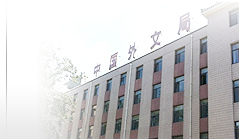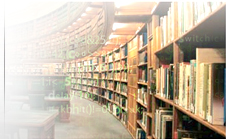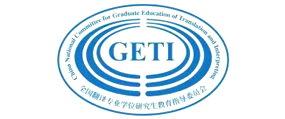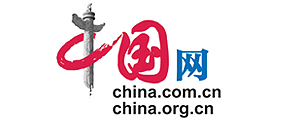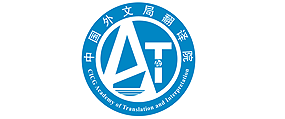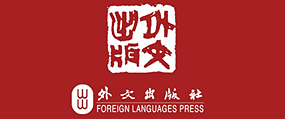“翻译与多元文化”论坛
促进文化交流、推动文明发展是翻译工作者的使命——联合国教科文组织总干事松浦晃一郎致世界翻译大会的贺词 / 5
发展翻译事业 促进世界多元文化的交流与繁荣 / 黄友义 6
翻译与多元之美 / 孙艺风 10
纪念傅雷诞辰一百周年
赤子之心,人文情怀——傅雷永远活着 / 许钧 20
纪念翻译巨匠傅雷 / 柳鸣九 21
傅雷的精神遗产 / 陈思和 22
怀念傅雷先生 / 叶兆言 23
文学翻译史的一座里程碑——怀念傅雷 / 李景端 26
从语符翻译到跨文化图像翻译:傅雷翻译的启示 / 王宁 刘辉 28
译史纵横
中国诗歌翻译概论与理论研究新领域 / 辜正坤 34
五四文学翻译对“信”的重构 / 廖七一 39
翻译教学
口译互动式教学模式绩效研究 / 蔡小红 45
口译课程培养模式探索 / 陈振东 49
书刊评介
全球/本土张力视角下的中国翻译研究——《翻译、全球化和本土化:中国视角》评介 / 李波 54
译技探讨
古诗词英译中的意境美 / 顾正阳 喻萍 58
论中医名词术语英译国际标准化的概念、原则与方法 / 李照国 63
法律英语条件句的写作和翻译 / 李克兴 71
旅游宾馆介绍语篇的语用分析及其翻译 / 叶苗 78
自学之友
·译家译作·
英译汉:The Figure a Poem Makes(Robert Frost ) / 曹明伦 译注 84
翻译导读:谈译者的主体性及其学识才情 / 曹明伦 87
汉译英:孩子,快抓紧妈妈的手!——为汶川地震死去的孩子而作 / 王宏 译注 89
翻译导读:真情译诗 形神兼似 / 王宏 90
词语选译
中国译协对外传播翻译委员会中译英研讨会最新讨论词汇选登 / 93
英文摘要 / 94
庆祝2008年国际翻译日
2008年国际翻译日主题:术语学——词语至关重要 / 96
信息广角
本刊邮购信息(53)
本刊稿约(92)
中文摘要
发展翻译事业 促进世界多元文化的交流与繁荣
黄友义 中国外文局 中国翻译协会
摘 要: 本文介绍了世界翻译大会的基本情况和中国申办、筹备第十八届世界翻译大会的历程,论述了翻译在人类社会和人类文明发展进程中的重要作用。文章强调,在全球 化的今天,维护文明多样性、促进多元文化交流、推动人类的共同进步是翻译工作者义不容辞的使命和职责;中国文化传播和文化交流事业的发展呼唤翻译事业的勃 兴,特别是要加强中译外工作,提高中译外翻译质量,让世界共享中华文明成果。
中图分类号:H059 文献标识码:A 文章编号:1000-873X (2008)04-0006-04
翻译与多元之美
孙艺风 香港岭南大学
摘 要: 在全球化和跨文化的语境下,翻译与文化传播息息相关,随着翻译研究的文化转向,“文化翻译”的概念理应受到关注。文化翻译是源自文化研究的一个概念,指在 特定文化内进行的语言或其它方面的改造。由于文化的构建作用日显突出,文化形态的各种存在、变迁及改造方式,成为人文和社会科学诸多学科研究的重要方面。 翻译对文化多元格局的形成,有着举足轻重的影响。在世界各国人民交往的过程中,文化翻译的重要性日益提升,其沟通不同文化脉络,增强彼此之间相互了解和尊 重的作用不容忽视;由此而体现的多元之美代表着人类社会的进步与发展。随着多元文化的崛起,世界多元之美的前景是完全可以期待的。
关键词:文化翻译;多元文化;跨文化对话;嬗变改造
中图分类号:H059 文献标识码:A 文章编号:1000-873X (2008)04-0010-10
从语符翻译到跨文化图像翻译:傅雷翻译的启示
王 宁 刘 辉 清华大学
摘 要: 人们一般认为,对艺术作品的阐释不属于翻译,但若按照雅各布森所描述的翻译的三个方面:语内翻译、语际翻译和语符翻译来看,这显然属于跨文化语符翻译的范 畴。本文首先从雅各布森的翻译定义出发阐述了作者本人对翻译的界定和理解,然后指出,在当今的后现代信息时代,图像的无所不在和对文字空间的挤压使得人们 越来越感觉到,我们身处在一个“读图的时代”。伟大的翻译家和艺术理论家,如本雅明、罗兰·巴特、贡布里希等,大多对文字和图像艺术有着深厚的造诣,都在 这两方面的翻译阐释上达到炉火纯青的境地。但他们所从事的图像翻译主要面对的是西方文化语境中的读者,并没有达到跨越不同文化语境的图像翻译境地。而中国 翻译家傅雷的《世界美术名作二十讲》则面对的是中国读者,他的这种语符翻译不仅跨越了学科和艺术门类的界限,更跨越了文化和语言的界限,因而应该被看作是 广义的文化翻译中的语符翻译的结晶。作者认为,傅雷的跨文化语符翻译以其成功的实践预示了雅各布森多年后从理论上对语符翻译的阐述。在从语符翻译到今天的 跨文化图像翻译的发展过程中,中国的翻译家至少在翻译实践上对西方翻译理论的建构做出了贡献。
关键词:语符翻译;跨文化图像翻译;傅雷;文化阐释
中图分类号:H059 文献标识码:A 文章编号:1000-873X (2008)04-0028-06
五四文学翻译对“信”的重构
廖七一 四川外语学院
摘 要:五四前后是中国传统翻译规范急剧变化和现代翻译规范肇始的重要时期。新一代翻译家和翻译批评家尖锐批评晚清翻译中背离“信”的现象,认真探究“信”的内涵和翻译本质,积极探索和创建文学翻译的范例,并通过赞助系统强化和推行“信”的标准,促进了现代翻译规范的确立。
关键词:五四时期;翻译规范;信的重构;赞助系统
中图分类号:H059 文献标识码:A 文章编号:1000-873X (2008)04-0039-06
口译互动式教学模式绩效研究*
蔡小红 广东外语外贸大学
摘 要: 针对当前口译教学缺乏完整教学模式及训练绩效评估系统的现状,我们提出了基于信息技术环境下的口译互动训练模式。该模式利用网络和多媒体技术优势,营造多 元化的口译训练环境,同时应用科学的评估系统全程监控口译训练的绩效。对于绩效的研究可以不断检验口译教学中的得失,及时调整训练步骤,优化师生配合,探 索和发挥先进教学模式的潜在优势。
关键词:口译训练;互动模式;绩效研究
中图分类号:H059 文献标识码:A 文章编号:1000-873X (2008)04-0045-04
口译课程培养模式探索
陈振东 上海财经大学
摘 要: 口译是英语专业高年级的必修课。本文以建构主义观点为理论依据,根据口译技能性的特点,提出“以学生参与为中心,以实战操练为手段,以提高技能为目的”的 口译课程培养模式。同时,本文从作者的口译教学和实践经验出发,对此模式在口译教学中如何最大程度地调动学生的积极性和参与性,使他们主动地动耳、动脑、 动口和实际操练做了探究。
关键词:口译教学;学生;实战操练;技能
中图分类号:H059 文献标识码:A 文章编号:1000-873X (2008)04-0049-05
古诗词英译中的意境美
顾正阳 喻萍 上海大学
摘 要:历来,“意境”说占据了中国诗学结构的中心地位。作为诗歌基本单位的情与景,两者契合无间构成了诗歌的意境。本文从表层意境、里层意境两个层面探讨了古诗词意境美的传译技巧。只有通过对诗歌意境的理解和采取合适的翻译方法,译者才能成功地传达诗歌意境美。
关键词:意境;表层意境 ;里层意境
中图分类号:H059 文献标识码:A 文章编号:1000-873X (2008)04-0058-05
论中医名词术语英译国际标准化的概念、原则与方法
李照国 上海外国语大学 上海师范大学
摘 要:本文根据中医翻译在国内外的长期实践,对中医基本名词术语英译国际标准化问题进行了系统地研究分析,通过对中医基本名词术语进行分类比较,提出和论证了国际标准化的概念、原则和方法。
关键词:中医药学;名词术语;翻译研究;国际标准化
中图分类号:H059 文献标识码:A 文章编号:1000-873X (2008)04-0063-08
法律英语条件句的写作和翻译
李克兴 香港理工大学
摘 要:本文从对法律文本的操作分析入手,将典型的法律句式分为法律主体、法律行为以及情况或条件等三大要素。由此推断及论证程式化的法律句子由两种基本成分构成:包含法律主体和行为的主句,与确立条件、资格或性质的条件从句。本文重点论述法律条件句中最常用的6组共8个主要引导词的作用,对if;where;when;in case,in the event that;should;provided,providing 等词的用法和差异作了较系统的介绍和辨析,同时还对其适当的汉译对应词作了推介。
关键词:法律主体;法律行为;情况;限定条件;条件从句
中图分类号:H059 文献标识码:A 文章编号:1000-873X (2008)04-0071-07
Contents
Message from Ko chiro Matsuura, Director-General of UNESCO, to the Congress of the International Federation of Translators / 5
Developing China,s Translating Profession to Help Bring about a More Productive Interaction among
the World,s Diverse Cultures / Huang Youyi 6
Translation and the Beauty of Diversity / Sun Yifeng 10
In Memory of the 100th Anniversary of Fu Lei,s Birth
From Semiotic Translation to Cross-Cultural Iconographical Translation: Fu Lei's Contributions to Translation Theory / Wang Ning & Liu Hui 28
Poetry Translation in China: Historical Achievements and Contemporary Conceptions / Gu Zhengkun 34
Reconstructing“Faithfulness”in Literary Translations during the May 4th Period / Liao Qiyi 39
A Performance-keyed Study of an Interactive Model for Teaching Interpreting / Cai Xiaohong 45
“Students, Mock Practices, and Skills”: A Model for Teaching Interpretation / Chen Zhendong 49
Re-creating Artistic Conception in Translations of Classical Chinese Poetry / Gu Zhengyang & Yu Ping 58
Standardizing English Translation of Traditional Chinese Medical Terminology: An Analysis of the Concepts, Principles and Methods Concerned / Li Zhaoguo 63
Composing and Translating Conditional Clauses in Legal Texts / Li Kexing 71
Celebrating International Translation Day 2008: Terminology: Words Matter
E/C Translation Practice: The Figure a Poem Makes (Robert Frost ) / Cao Minglun 84
C/E Translation Practice: Hold Tight Mommy,s Hand, Baby! / Wang Hong 89
English Abstracts of Major Papers in This Issue / 94
Abstracts of Major Papers in This Issue
Developing China,s Translating Profession to Help Bring about a More Productive Interaction among the World,s Diverse Cultures
by Huang Youyi (Translators Association of China) p. 6
Abstract: Offering an account of how China successfully bid and prepared for hosting FIT,s 18th World Congress, this article draws attention to the key role translation has been playing in the development of human society and human civilization. Arguing that our age of globalization in particular has charged the translation community with a three-fold duty, i.e., to preserve civilizational diversity, to facilitate exchanges among different cultures and to expedite the human progress in general, the author calls for a vigorous growth of China,s translating profession and practice, quantitatively as well as qualitatively, so as to honor the duty and also to keep pace with the rapid expansion of China,s cultural communication and exchange with the outside world.
Translation and the Beauty of Diversity
by Sun Yifeng (Lingnan University, Hong Kong, China) p. 10
Abstract: In the global and cross-cultural context, translation is essentially inseparable from cultural communication. In relation to the cultural turn in Translation Studies,“cultural translation”merits serious attention. The concept of cultural translation derives from Cultural Studies, referring to the transformation of language and other related aspects within a given culture. With the increasing prominence of cultural construction, the various modes of existence, change and transformation with regard to cultural forms constitute important research areas in many fields of humanities and social sciences. Translation has exerted a pivotal influence on the shaping of cultural diversity. The importance of cultural translation is increasingly underscored and its role in bridging across different cultural systems and increasing mutual understanding and respect must not be overlooked. The beauty of cultural diversity thus achieved represents human
social progress and development. With the emergence of cultural diversity, the prospect of the world-wide beauty of diversity can be fully expected.
Key words: cultural translation, cultural diversity, cross-cultural dialogue, transformation
From Semiotic Translation to Cross-Cultural Iconographical Translation: Fu Lei,s Contributions to Translation Theory
by Wang Ning& Liu Hui (Tsinghua University, China) p. 28
Abstract: Even though interpreting artistic works is not usually thought of in translational terms, it nonetheless falls under what Roman Jakobson called“inter-semiotic translation.”Such an understanding is especially relevant at present, for images have so permeated every aspect of human life in our age of information that iconographical interpretation has become a routine discursive activity. Great 20th-century art theorists and translators, such as Walter Benjamin, Roland Barthes and Ernst Gombrich, had all displayed great virtuosity in dealing with words and images alike. Yet their inter-semiotic translation is framed by their native Western culture, while Fu Lei, an eminent Chinese translator of the same period, had not only done just as excellent a job in iconographical translation, but managed to cross the boundary between languages and cultures in so doing. As his 20 Lectures on World Famous Paintings shows, Fu Lei,s interpretation of arts, in addition to being cross-cultural semiotic translation par excellence, preceded by many years and thus prefigured Jakobson,s theoretic elaboration. In taking the first steps from the practice of culture-specific semiotic translation to that of cross-cultural iconographical translation, therefore, Chinese translators have made valuable contributions to the development of Western translation theory.
Key words: semiotic translation; cross-cultural iconographical translation; Fu Lei; cultural interpretation
Poetry Translation in China: Historical Achievements and Contemporary Conceptions
by Gu Zhengkun (Peking University, China) p.34
Abstract: Based on a survey of poetry translating practices in classical and modern China and the theories of poetry translation these practices have given rise to, the paper identifies four constraining factors that affect the Chinese conceptualization of poetry translation. These are 1) the structure of the Chinese language, which imposes constraints on the way Chinese poetry translation is theorized; 2) the researcher,s ethos, which conditions his or her view of poetry and its translation; 3) the translator-cum-theorist,s own translation experiences, which exercise influences on his thinking about poetry translation in general; and 4) the translator-cum-theorist,s enculturation, which orients him or her to a particular mode of conceptualizing translation. In addition, the author also proposes ad hoc solutions to issues of fidelity and elegance occurring in literary, especially poetry, translation.
Key words: Chinese translation; poetry translation; constraining factor; linguistic structure; ethos; translational practice; enculturation
Reconstructing“Faithfulness”in Literary Translations during the May 4th Period
by Liao Qiyi (Sichuan International Studies University, China) p.39
Abstract: A moment of radical transformation in the history of Chinese translation, the May 4th period fostered a new generation of translators who sharply criticized their predecessors around the end of the Qing Dynasty for deviating from a faithful reproduction of foreign literature. Inquiring into the nature of translation, exploring the meaning of fidelity and seeking help from a powerful patronage, these translators succeeded in displacing traditional norms by modern ones and thus in establishing a new cannon of translation.
Key words: May 4th Movement; translational norms; reconstruction; faithfulness; patronage
A Performance-keyed Study of an Interactive Model for Teaching Interpreting
by Cai Xiaohong (Guangdong University of Foreign Studies, China) p.45
Abstract: Current researches on interpreting pedagogy are marred by four salient flaws: that they are not theoretically informed; that they dwell on an abstract and impractical discussion of syllabus design; that they disregard the IT-enabled new teaching environment and that they fail to attach sufficient importance to the performance of interpreting training. In an effort to remedy these problems, we have designed a scientific system for studying and assessing a model for teaching interpreting that we have put into practice on an experimental basis. This is a model that centers on competence development and presupposes an IT-enabled interactive environment of teaching and learning. By constantly carrying out performance-keyed studies of the new teaching method in the process of our experiments to check out its merits and demerits, we are able to make timely adjustments in the pace of training, enhance teacher-student collaboration, and bring the potential advantages of the methodology into full swing.
Key words: interpreting training; interactive methodology; performance study
“Students, Mock Practices, and Skills”: A Model for Teaching Interpretation
by Chen Zhendong (Shanghai University of Finance and Economics, China) p.49
Abstract: Interpretation is a compulsory course for senior English majors. Taking the peculiarities of this course into full consideration and drawing from the insights of constructivism as well, this paper proposes a pedagogical model for its teaching that is student-centered, mock practice-oriented and skills cultivation-targeted. A discussion on how the model could best be put into practice is also offered.
Key words: interpretation teaching; student-oriented; mock practice; skills
Re-creating Artistic Conception in Translations of Classical Chinese Poetry
by Gu Zhengyang & Yu Ping (Shanghai University, China) p. 58
Abstract: “Artistic conception,” which results from a fusion of emotion and sense in poetic works, holds by general consent the central position in interpreting classical Chinese poems and poses the most formidable challenge to their translation. This paper discusses the methods for meeting this challenge by distinguishing between the outer and the inner artistic conception, and by defining what it means to be successful in rendering the artistic conception of the original.
Key words: artistic conception; inner artistic conception; outer artistic conception
Standardizing English Translation of Traditional Chinese Medical Terminology: An Analysis of the Concepts, Principles and Methods Concerned
by Li Zhaoguo (Shanghai International Studies University; Shanghai Normal University, China) p. 63
Abstract: Surveying how special terms of traditional Chinese medicine have been turned into English both at home and abroad, this paper discusses the factors involved in standardizing English translation of traditional Chinese medical terminology, identifying the concept, the principles and the methods relevant for carrying out the task.
Key words: traditional Chinese medicine; terminology; translation study; international standardization
Composing and Translating Conditional Clauses in Legal Texts
by Li Kexing (The Hong Kong Polytechnic University, China) p. 71
Abstract: Operative analysis is instrumental to the training of legal writers and translators. A careful analysis of legal texts from an operative perspective often leads to the identification of three elements in them, i.e., the legal subject, the legal action and the case or condition. These elements constitute the two syntactic parts of any formalized legal sentence: the main clause, which is constituted of the first two, and the conditional clause, which determines the qualifications and the circumstances of the case concerned and is hence made up of the last element. Calling attention to 6 sets of conjunctive words or phrases frequently used to introduce conditional clauses in legal texts, this study discusses the subtle differences in the ways these words function, and recommends appropriate strategies for turning them into Chinese.
Key words: grammatical analysis; operative analysis; legal action; legal subject; case;
qualification; conditional clause

